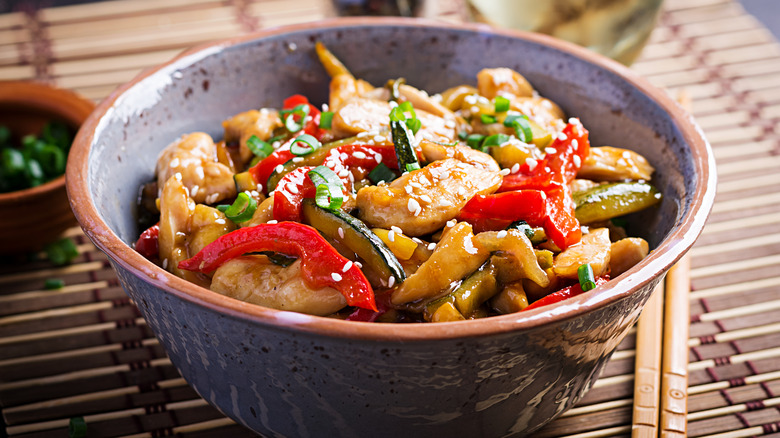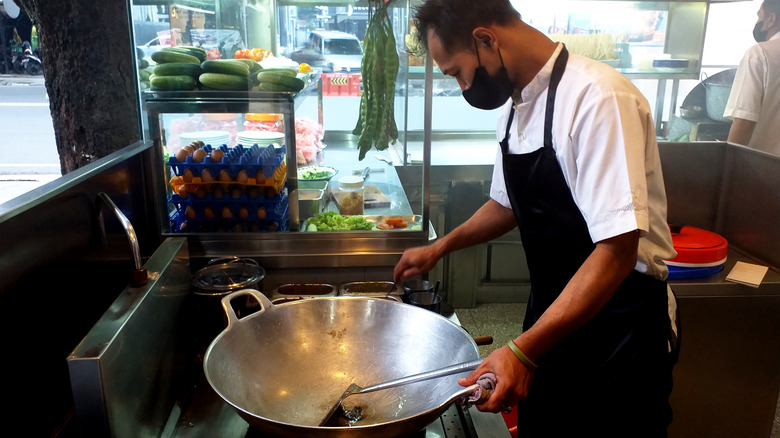Egg Whites Are Your Secret Weapon For A Better Stir Fry
Cooking techniques abound to make it easier to dish out tasty goodness in our daily lives. If those techniques happen to come with a catchy name like "velveting," all the better. In this case, it's apropos and aptly descriptive, as it describes a Chinese cooking process that tenderizes meats using simple, ordinary ingredients such as egg whites and cornstarch. Methods vary between chefs, but many incorporate ingredients like wine, soy sauce, oyster sauce, and baking soda.
Velveting could theoretically be employed in endless ways, but it's most commonly praised for sizzling up a stir fry meal. The process begins with making a batter out of corn starch and egg whites. that creates the core base of a velveting batter. But you can also add a small amount of oil or bump up the flavor with some Shaoxing wine, rice vinegar, or other compatible flavorings to taste.
This batter then sits on thinly sliced meat for your stir fry, resting for at least an hour in the refrigerator. This changes the chemical structure of the protein, softening it for a "velvety" texture. The egg whites in particular are a secret weapon, as they have a natural alkalinity, similar to baking soda, that aids in the tenderizing process. As the battered meat sits in the fridge, it creates a protective coating that seals in moisture and flavor during cooking. However, there's more to the velveting process, with another important step before the grand finale.
Finishing the velveting process for a perfect stir fry
Once the egg whites and cornstarch have done their velveting magic with wine and other chosen ingredients, there's another step that seals the deal. Prior to the final stir frying of meat with veggies, you'll need to give the battered meat a bit more attention. It takes less than a minute, but involves some hot oil and stovetop care.
Some call this blanching, others refer to a quick bath, but either way, your battered strips of meat are going into a pan of oil heated to about 300 degrees Fahrenheit. The goal is to ensure the batter melds with the stir fry meats without fully cooking it, so a dunk of half a minute should do the trick. It's worth noting that some home chefs opt for "water velveting," which essentially uses hot water with a small splash of oil instead of the full hot oil blanching. If you're hesitant about cooking with hot oil, try both methods and see which one fits your cooking style.
After draining the oil and cooling the blanched meat, it's time for stir fry glory. Toss all your favorite stir fry sauces and ingredients into a hot wok and proceed as usual. Save the meat until the end, since it has already been partially cooked. The strips of meat were thinly sliced at the beginning, so it should only take a quick sizzle before the entire stir fry is ready for waiting plates.

